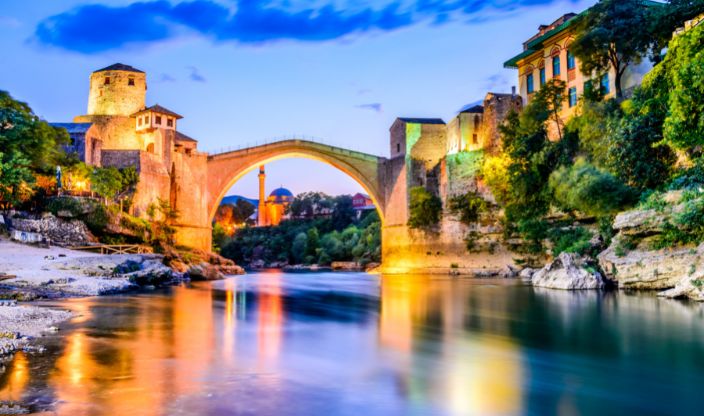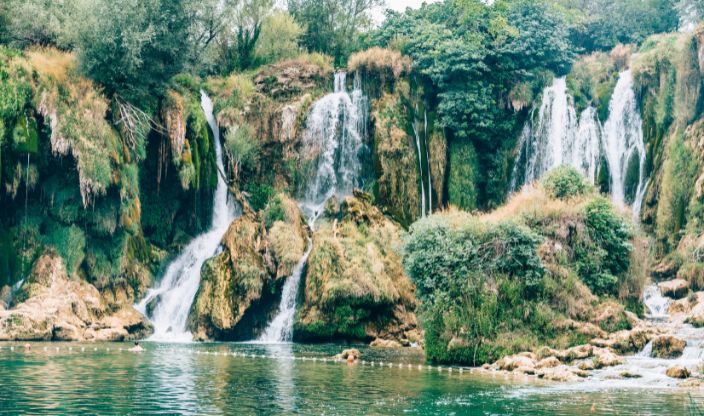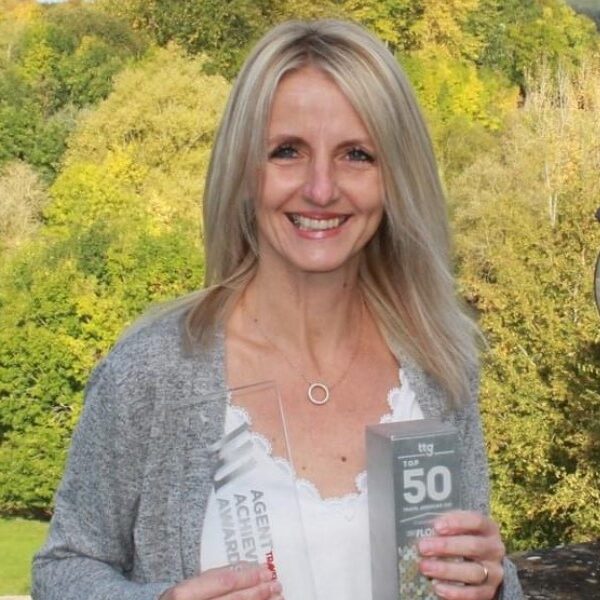Introducing Bosnia and Herzegovina
Bosnia and Herzegovina’s hilly, lush environment, make it a stunning treasure of the Balkan Peninsula, home to picturesque historic villages and castle ruins, as well as beautiful glacial lakes and magnificent waterfalls. Spectacular Mostar and its iconic Stari Most bridge are tucked among this varied scenery and are worth visiting when in Bosnia and Herzegovina.
Sarajevo, the country’s capital, is where east and west merge. The elaborate buildings from the Austro-Hungarian era coexist in this city’s cultural fusion with minarets and domes from the Ottoman Empire. The nation’s natural beauty and the genuine friendliness of its people will be key highlights of your trip.
Croatia, Serbia, and Montenegro all share a border with Bosnia and Herzegovina and has a small peninsula that runs along the Adriatic Sea. There are many mountains in the country. The western boundary is surrounded by the Dinaric Mountains. Bosnia and Herzegovina, is a country with incredible forestry and exceptional natural springs.
Bosnia-Herzegovina is best visited in May, June, and early September when the heat is at its lowest and trekking is at its most beautiful. With the sun is out and the days are longer, February and March are ideal months for winter sports. Some of these activities include, snowshoeing in the mountains, visiting mountain locals, appreciating Ottoman grandeur, and hiking through amazing scenery.
In Bosnia and Herzegovina, people value their relationships with family and friends, and they frequently extend hospitality. Local coffee shops or cafés, known as kafanes and kaficis, are popular places for people to socialise.
The history of Bosnia and Herzegovina dates back to the first and second centuries B.C., during the Roman invasion. The region of Bosnia would later join the Byzantine Empire in the sixth century. In 1448, the region of Herzegovina was created. Later that century, under Turkish administration, it joined Bosnia. Bosnia and Herzegovina were ruled by Austria-Hungary when the Russo-Turkish War broke out in 1877. Bosnia and Herzegovina were conquered by Serbia after World War I and the fall of Austria-Hungary. Bosnia and Herzegovina joined pro-Hitler Croatia during World War II and eventually joined the other six nations that made up Yugoslavia. Bosnaks and Croats voted for independence in 1991 to break away from Yugoslavia and prevent Serbian domination. Two million people were forced from their homes because of the prolonged war with Serbia.
In 1995, a pact known as the Dayton Agreement was negotiated, putting a stop to the war. The North Atlantic Treaty Organization continues to uphold the treaty (NATO). What is left is a broken state made up of the Federation of Bosnia and Herzegovina and the Serb Republic of Bosnia Herzegovina, two separate nations.
Places to visit with your family include:
Vrelo Bosne Park:
The park of Vrelo Bosne is one of the most beautiful parks in the country, with over a century of history. You can find a forest, a river, a waterfall, numerous bridges, a little cafe, and numerous treks in this fascinating park. Relax in the park, take family strolls or have a picnic with the family on your day trip there.
Grbavica Stadium:
Grbavica Stadium, also known as “Valley of Cups” locally, is a stadium in Sarajevo, situated on Zvornika Street. The stadium, accessible from noon till late, was constructed in 1940 and refurbished in the 1970s. With a capacity of roughly 13,500 people, it is used for all the significant matches, as well as national team games. The stadium also hosted the UEFA Cup in 1984–1985 season and is a must see for sports families.
Playland Amusement Park located on Andela Zvizdovica Street in Sarajevo:
A great spot for some family fun, the Playland Amusement Park includes swimming pools filled with plastic balls, carousels, different-sized slides, electric cars, little cottages, amongst other entertainment activities to keep the family amused and entertained.
Recommended Bosnia and Herzegovina Specialists
Top Locations in Bosnia and Herzegovina




















